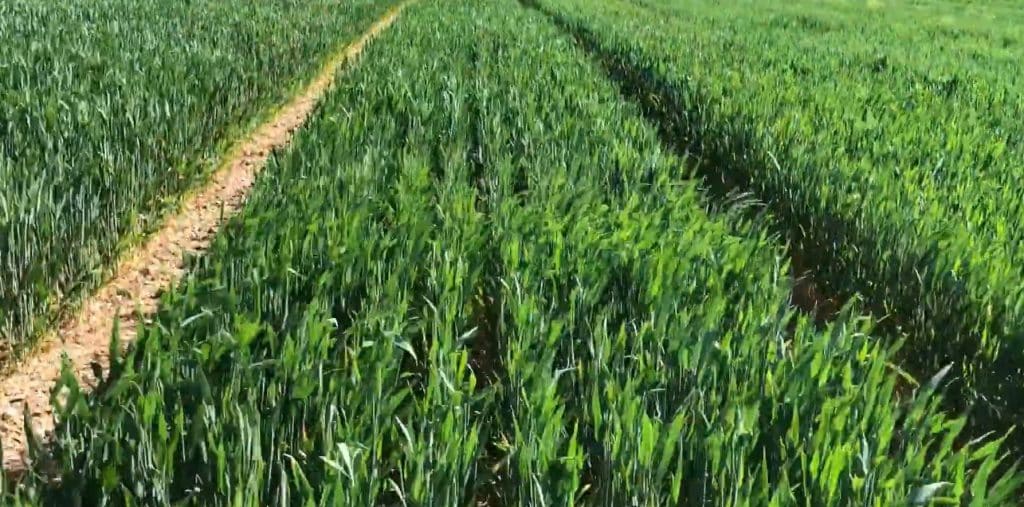Growth stage should determine application – Farmers Guardian
Agronomists’ tips on best use of plant protection products ...
Growers are being remind- ed of the importance sowing date plays in deter- mining which plant protection products (PPP) can be applied to late-sown cereals.
Rules set out by the Health and Safety Executive’s Chemicals Regulations Division (CRD) define a winter cereal as one that has been sown on or before January 31, and any cereal drilled after that-even if it is a ‘winter’ variety – is legally classed as a spring cereal and must be treated as such in the eyes of the CRD.
Equally, a ‘spring’ variety sown be- fore the end of January will technically be considered as a winter variety from a regulatory viewpoint, says Hutchinsons technical support manager Duncan Connabeer.
“Although sowing date does not change the genetic traits of a winter or spring variety, these drilling date definitions do have important implications for the herbicides, fungicides, insecticides and growth regulators that can be legally applied on those crops,” adds Mr Connabeer.
“When winter cereals are sown after the end of January, they can only be treated with products approved in spring cereals.”
Supported use
Likewise, any product authorised for use in winter cereals can legally be used on spring cereals when they are sown before the end of January, however Mr Connabeer warns that such use may not necessarily be sup- ported by product manufacturers or agronomists.
Indeed, there can be an increased risk of crop damage from using some chemistry on winter cereals drilled in spring, or spring cereals sown in au- tumn, therefore growers must check product labels carefully and discuss the most suitable options with their agronomist, he says.
Wide variations in crop develop- ment mean extra care will be need- ed when timing the T1 fungicide this spring, says head of integrated crop management at Hutchinsons, David Howard.
“Accurate timing of any fungicide is crucial to its efficacy, but this can be challenging when there is a spread of drilling dates and crops are at a wide range of growth stages.
“Last season was a classic example, and there is similar variability in some areas this year, from early-sown for- ward wheats full of potential to later- drilled crops that have struggled to get going in wet soils,” he says. Mr Howard adds that this once again reinforces the importance of applying treatments according to growth stage, not calendar date, and recognising that later, more back- ward crops often go through growth stages quickly as temperatures and day length increase, potentially com- plicating spray timings.
“We have seen before that growers can sometimes be reluctant to invest too much in thinner crops, cutting back on early To and Tl sprays, only to find they then had to chase disease hard at T2 to get it back under control.
“Rust in particular can cycle and spread through the canopy very quickly, as some witnessed with the early appearance of brown rust last season. Septoria generally develops slightly later, but can also spread quickly given the right conditions, and with a number of early-sown forward wheats in many areas, risk needs to be managed appropriately.”
According to Mr Howard, growth stage (GS) 32 is the traditional Tl tim- ing, however growers must ensure the target leaf 3 is fully emerged before treating. This usually occurs between GS31-33, but can only be identified with careful plant dissection and identification of the leaves that are emerging, so he advises that growers do not rely just on splitting the stem open. “As products become increasingly specific to particular diseases, rather than offering all-round control, the choice of what to apply at T1 should be driven by the main disease[s] you are targeting and the level of risk that crops face,” he adds.
“Many products come with a part- ner to help support them against other diseases, so consider the op- tions carefully and how they fit into the wider programme.”
High pressure
Last year’s high pressure has helped to stratify products further, with pydiflumetofen and fenpicoxamid clearly leading septoria control, and isoflucypram, or mefentrifluconazole- based options, also separating them- selves from older actives, and will be leading options again this spring. Iso- flucypram offers useful activity on rust as well as septoria.”
There are a couple more options this year too, following the launch of a new product containing mefen- trifluconazole + prothioconazole, and another based on pydiflumeto- fen. The latter could be a good fit for some growers at T2, thereby freeing up fenpicoxamid to be used at T1 instead of T2 in high pressure septoria situations.
“While older chemistry may struggle with curative septoria con- trol, it is worth noting that SDHI/azole products, such as bixafen, flu- opyram + prothioconazole, have still been effective in trials where timed well in protectant situations,” Mr Howard says.
